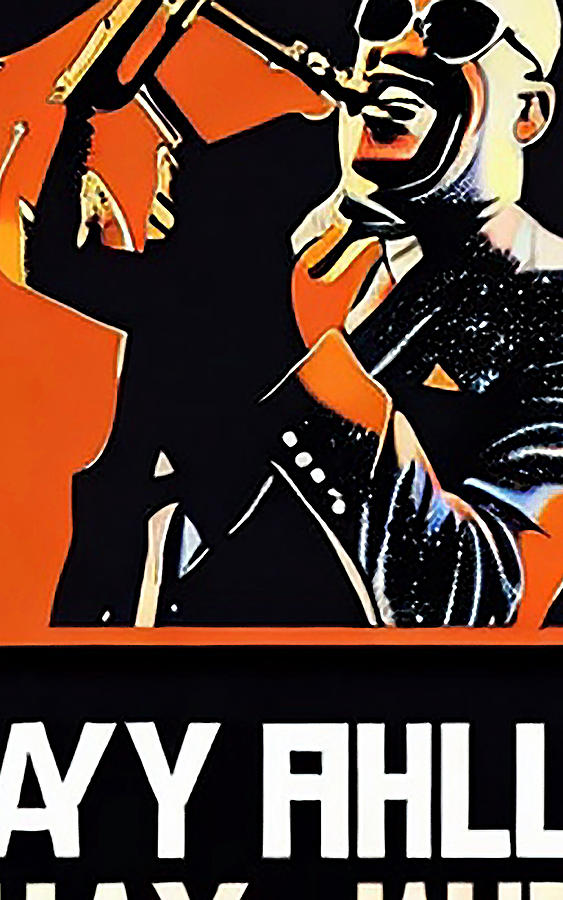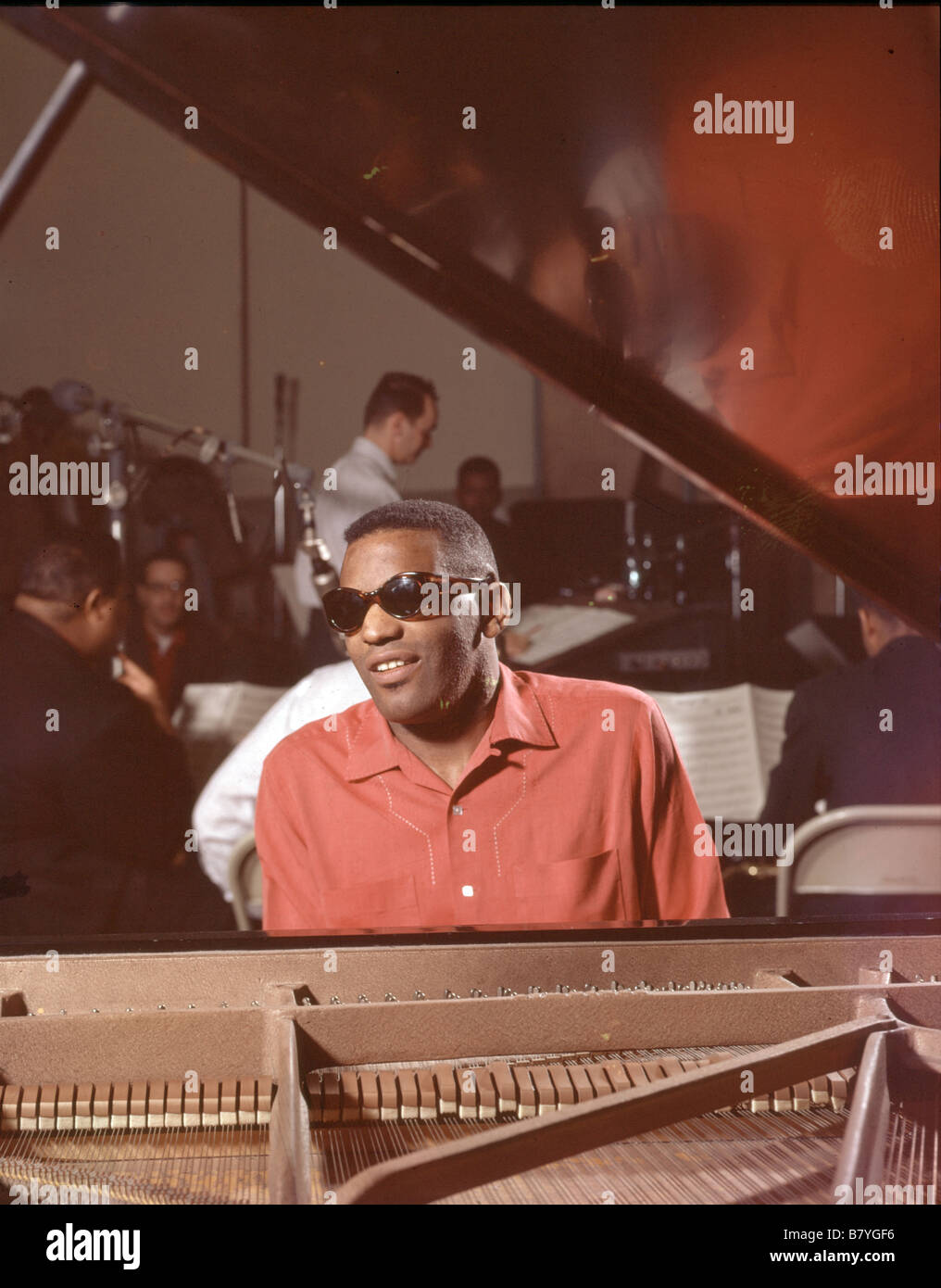Ray Charles, a name that resonates with timeless music and unmatched talent, wasn't just about the piano. While he's globally recognized as the "Genius of Soul," his journey with the saxophone adds another layer to his musical legacy. Imagine this: a man who could barely see the world but painted melodies so vividly that they touched millions. This article dives deep into Ray Charles' saxophone journey, exploring how this instrument became an integral part of his soulful sound.
Picture it: a dimly lit club in the '50s, the crowd buzzing with anticipation. As the band kicks in, a smooth saxophone solo cuts through the air, setting the tone for what’s about to unfold. That’s Ray Charles, not just behind the piano but also commanding the saxophone, creating a sound that would define an era. This article isn’t just about music; it’s about the man who redefined it.
So, why are we talking about Ray Charles and the saxophone? Because it’s a story of passion, resilience, and a musical genius who refused to be confined by labels or instruments. This article will take you through his journey, the influences, the challenges, and the triumphs. Buckle up, because we’re about to explore the soulful world of Ray Charles through the lens of his saxophone mastery.
Read also:Mike Ross Height Unveiling The Truth Behind The Suits Legend
Biography of Ray Charles
Early Life and Background
Before we dive into Ray Charles' saxophone journey, let’s take a moment to appreciate the man behind the music. Born on September 23, 1930, in Albany, Georgia, Ray Charles Robinson grew up in a world that was far from glamorous. His childhood was marked by hardships, yet it was these very challenges that shaped his unique sound. By the age of seven, Ray was blind, but his spirit remained unbroken.
His early exposure to music came from his mother’s love for the piano. She encouraged him to explore the world of sound, and by the time he was a teenager, Ray was already making waves in the music scene. His journey wasn’t just about overcoming blindness; it was about breaking barriers and creating a sound that the world had never heard before.
| Full Name | Ray Charles Robinson |
|---|---|
| Date of Birth | September 23, 1930 |
| Place of Birth | Albany, Georgia |
| Genres | Soul, R&B, Jazz, Blues |
| Occupation | Singer, Pianist, Composer |
Ray Charles and the Saxophone: A Match Made in Music
First Encounter with the Saxophone
So, how did Ray Charles end up playing the saxophone? Well, it all started in the early days of his career when he was exploring different sounds and instruments. The saxophone wasn’t just an instrument; it was a voice that complemented his soulful piano playing. Imagine walking into a club and hearing that rich, deep tone cutting through the night. That’s what Ray brought to the table with the saxophone.
His first encounter with the saxophone was almost serendipitous. During a gig in a small club, the saxophonist didn’t show up, and Ray stepped in, showcasing a talent that would later become a staple of his performances. This wasn’t just about filling a gap; it was about creating a sound that was uniquely Ray Charles.
The Influence of Jazz and Blues on Ray Charles' Saxophone Style
Blending Genres: The Ray Charles Way
Ray Charles didn’t just play the saxophone; he breathed life into it. His style was heavily influenced by jazz and blues, genres that he mastered early in his career. Think about it: the smoothness of jazz combined with the raw emotion of blues. That’s what Ray brought to the saxophone. It wasn’t just about playing notes; it was about telling a story, a story that resonated with people from all walks of life.
Read also:When Did Will Smith Die Debunking The Rumors And Celebrating A Living Legend
His ability to blend genres was unmatched. He took the saxophone from the realms of jazz clubs to the forefront of soul music. This wasn’t just about technical skill; it was about emotion, passion, and a deep understanding of music that transcended genres. Ray Charles wasn’t just a musician; he was a storyteller, and the saxophone was one of his most powerful tools.
Ray Charles' Saxophone Journey: Key Moments
Memorable Performances and Recordings
Let’s talk about some of the key moments in Ray Charles' saxophone journey. One of the most memorable performances was at the Newport Jazz Festival in 1958. The crowd went wild as Ray took the stage, saxophone in hand, and delivered a performance that would be talked about for years to come. This wasn’t just about playing the saxophone; it was about commanding the stage and leaving an indelible mark on the audience.
His recordings with the saxophone are equally legendary. Tracks like “What’d I Say” feature saxophone solos that are nothing short of iconic. These recordings weren’t just about music; they were about creating a legacy that would inspire generations of musicians to come. Ray Charles wasn’t just playing the saxophone; he was redefining it.
The Impact of Ray Charles' Saxophone on Modern Music
Shaping the Sound of Soul and R&B
Ray Charles' saxophone playing had a profound impact on modern music. His unique style and sound influenced countless artists across genres. The soulful notes of the saxophone became a staple in soul and R&B music, setting a benchmark for future musicians. This wasn’t just about influence; it was about legacy. Ray Charles left a mark on the music industry that continues to resonate today.
His contributions to the world of music go beyond just playing the saxophone. He paved the way for a new era of musicians who weren’t afraid to break boundaries and explore new sounds. This was a man who refused to be confined by labels or genres, and his saxophone playing was a testament to that spirit.
Technical Aspects of Ray Charles' Saxophone Playing
Mastery of Techniques and Styles
Let’s talk about the technical side of Ray Charles' saxophone playing. His mastery of techniques and styles was nothing short of impressive. He wasn’t just about playing notes; he was about creating a sound that was uniquely his. His ability to blend different styles and techniques set him apart from his contemporaries. This wasn’t just about skill; it was about artistry.
His saxophone playing was characterized by a deep understanding of rhythm and melody. He knew how to use the saxophone to enhance his performances, creating a sound that was both powerful and soulful. This was a man who understood the language of music and spoke it fluently through his saxophone.
Ray Charles' Saxophone Collaborations
Working with Legendary Artists
Ray Charles' saxophone journey wasn’t just about solo performances; it was also about collaborations. He worked with some of the biggest names in the music industry, creating music that transcended genres and boundaries. These collaborations weren’t just about playing together; they were about creating something special, something that would leave a lasting impact on the music world.
His collaborations with artists like Quincy Jones and Aretha Franklin are legendary. These partnerships weren’t just about music; they were about creating a legacy that would inspire future generations. Ray Charles wasn’t just a musician; he was a collaborator, a visionary who understood the power of music to bring people together.
Challenges and Triumphs in Ray Charles' Saxophone Career
Overcoming Obstacles and Achieving Success
Like any great journey, Ray Charles' saxophone career was marked by challenges and triumphs. He faced numerous obstacles, from racial discrimination to personal struggles, yet he continued to push forward, creating music that inspired millions. This wasn’t just about overcoming challenges; it was about triumphing over them and emerging stronger.
His triumphs were many, from winning numerous awards to being inducted into the Rock and Roll Hall of Fame. These achievements weren’t just about recognition; they were about validation of his hard work and dedication to his craft. Ray Charles wasn’t just a musician; he was a fighter, a man who refused to let anything stand in the way of his dreams.
Ray Charles' Saxophone Legacy: A Lasting Impact
Influencing Future Generations
Ray Charles' saxophone legacy continues to influence future generations of musicians. His unique style and sound have inspired countless artists across genres, setting a standard that many strive to achieve. This wasn’t just about influence; it was about legacy. Ray Charles left a mark on the music industry that continues to resonate today.
His contributions to the world of music go beyond just playing the saxophone. He paved the way for a new era of musicians who weren’t afraid to break boundaries and explore new sounds. This was a man who understood the power of music to change lives and used it to create a legacy that would last for generations.
Conclusion: Celebrating Ray Charles' Saxophone Journey
As we wrap up this journey through Ray Charles' saxophone legacy, it’s clear that his impact on the world of music is immeasurable. From his early days in Georgia to his legendary performances on stage, Ray Charles redefined what it meant to be a musician. His saxophone playing wasn’t just about notes; it was about emotion, passion, and a deep understanding of music that transcended genres and boundaries.
So, what can we learn from Ray Charles? That music is more than just sound; it’s a language that speaks to the soul. His journey with the saxophone is a testament to the power of music to bring people together, to inspire, and to change lives. As you continue to explore the world of music, remember the man who played the saxophone with soul: Ray Charles.
Don’t forget to leave a comment, share this article, or check out more stories about music legends. Let’s keep the spirit of Ray Charles alive by celebrating his legacy and the music that continues to inspire us all.
Table of Contents


